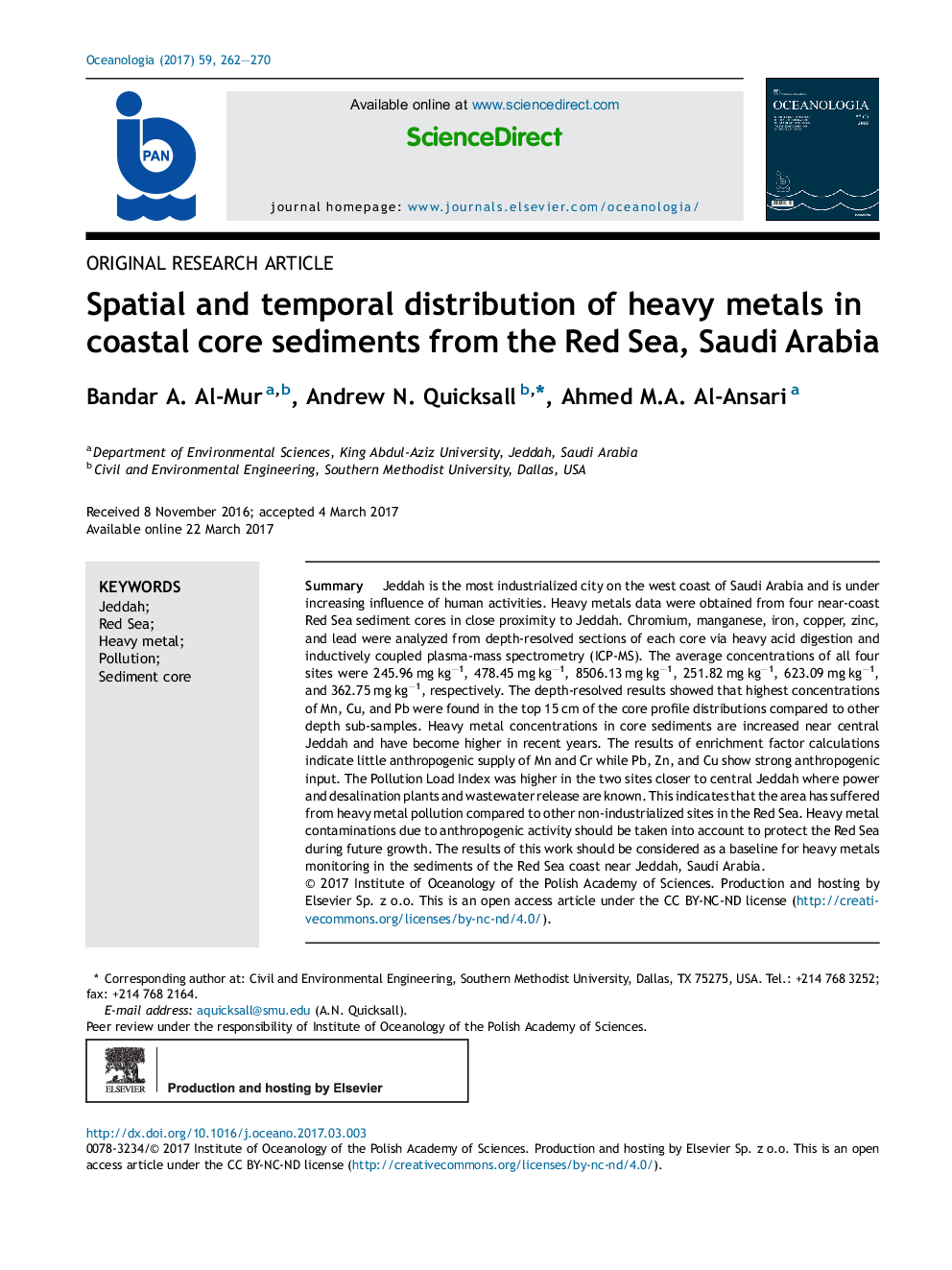| Article ID | Journal | Published Year | Pages | File Type |
|---|---|---|---|---|
| 5519774 | Oceanologia | 2017 | 9 Pages |
SummaryJeddah is the most industrialized city on the west coast of Saudi Arabia and is under increasing influence of human activities. Heavy metals data were obtained from four near-coast Red Sea sediment cores in close proximity to Jeddah. Chromium, manganese, iron, copper, zinc, and lead were analyzed from depth-resolved sections of each core via heavy acid digestion and inductively coupled plasma-mass spectrometry (ICP-MS). The average concentrations of all four sites were 245.96 mg kgâ1, 478.45 mg kgâ1, 8506.13 mg kgâ1, 251.82 mg kgâ1, 623.09 mg kgâ1, and 362.75 mg kgâ1, respectively. The depth-resolved results showed that highest concentrations of Mn, Cu, and Pb were found in the top 15 cm of the core profile distributions compared to other depth sub-samples. Heavy metal concentrations in core sediments are increased near central Jeddah and have become higher in recent years. The results of enrichment factor calculations indicate little anthropogenic supply of Mn and Cr while Pb, Zn, and Cu show strong anthropogenic input. The Pollution Load Index was higher in the two sites closer to central Jeddah where power and desalination plants and wastewater release are known. This indicates that the area has suffered from heavy metal pollution compared to other non-industrialized sites in the Red Sea. Heavy metal contaminations due to anthropogenic activity should be taken into account to protect the Red Sea during future growth. The results of this work should be considered as a baseline for heavy metals monitoring in the sediments of the Red Sea coast near Jeddah, Saudi Arabia.
